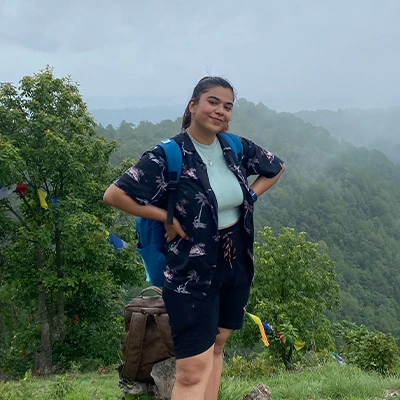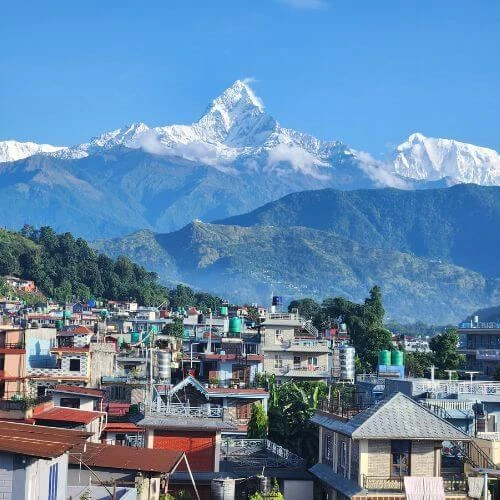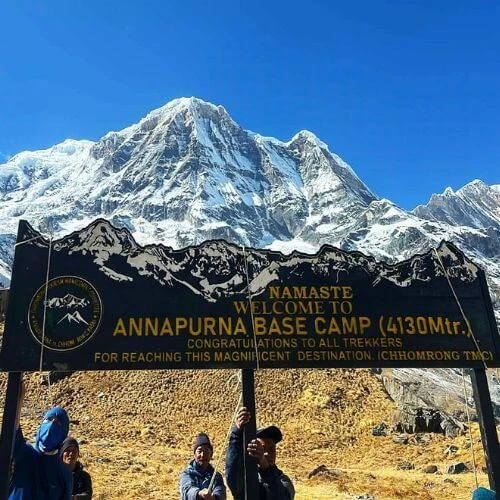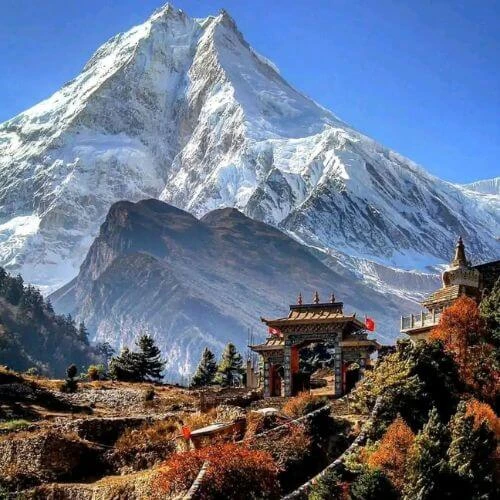Planning your Langtang Valley Trek? Having the right gear can make your journey safe, comfortable, and far more enjoyable. That is why this Langtang Valley Trek Packing List is here to help you organize everything. From clothing and equipment to permits and local tips, we are here to make sure that you’re fully ready for the adventure ahead.
The Langtang region might be close to Kathmandu, but its changing weather and high altitude make packing smartly just as important as for longer Himalayan treks. This guide includes everything you need, from clothing and equipment to documents and local rental advice. You’ll also find practical tips on packing light, staying warm, and getting ready for the trail.
If you’re still in the planning stage, Abound Holidays can help arrange your Langtang adventure and give personal advice on gear and preparation before your trip.
Introduction to the Langtang Valley Trek
The Langtang Valley Trek is one of Nepal’smost loved short treks, combining mountain views, Tamang culture, and easy access from Kathmandu. It takes you through rhododendron forests, stone villages, and high meadows up to Kyanjin Gompa, with a side trip to Tsergo Ri (4,984 m) for panoramic Himalayan views.
Although the trek is moderate, the weather in Langtang Valley can shift quickly, especially at higher altitudes. Packing properly ensures you stay warm, dry, and prepared for anything. Whether you’re trekking in the spring season or winter snow, having the right gear will keep you focused on the scenery, not discomfort.
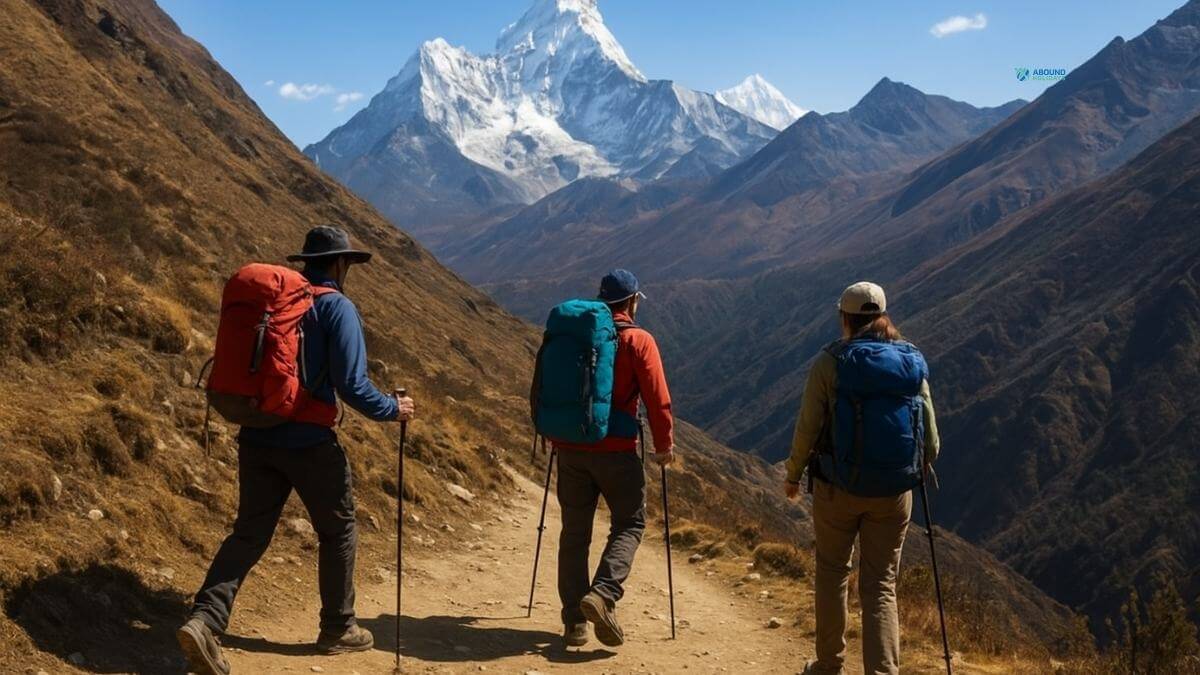
Travel Documents & Permits
Before heading into the Langtang mountains, you must make sure your travel paperwork is complete. Missing permits or identification can cause delays along the trail.
- Valid Passport: Make sure your passport won’t expire for at least six months after you come back home.
- Nepal Visa: You can get a tourist visa when you land at Kathmandu airport or apply for it online before your trip.
- Langtang National Park Permit: You need this to enter the national park area.
- TIMS Card (Trekkers’ Information Management System): Every trekker must have this card for safety tracking.
- Copies of Documents: Keep both printed and digital copies of your passport, permits, and travel insurance.
- Passport-sized Photos: Bring at least four small photos for getting your permits.
- Travel Insurance: Choose one that covers high-altitude trekking (up to 5,000 m) and helicopter evacuation.
Abound Holidays helps trekkers handle all permit paperwork before departure, so you can focus on packing.
Seasonal Considerations
Langtang Valley can be trekked almost year-round, but your Langtang Valley Trek packing list should change slightly with the season.
- Spring (March–May): Days are warm, nights are cold, and the forests look colourful. It’s a great time to trek because the weather is nice and the skies are clear.
- Autumn (September–November): This is the best season for trekking. The weather stays steady, trails are dry, mountains are clearly visible, and the temperature feels just right.
- Winter (December–February): It’s cold and peaceful, but you might see snow above Kyanjin Gompa. Bring extra warm clothes and a thicker sleeping bag.
- Summer/Monsoon (June–August): It is warm but rainy. Pack a strong raincoat, quick-drying clothes, and waterproof bags.
If trekking in winter or monsoon, pack heavier insulation or water-resistant layers. In spring and autumn, lightweight and breathable layers work best.
Backpack & Luggage
Your backpack is your mobile home during the trek, so comfort and size matter. Also, make sure you keep frequently used items like your jacket or camera in the top pocket of your daypack
- Main Backpack (40 - 50L): This holds your main trekking gear. Choose one with padded shoulder strap and a rain cover.
- Daypack (30 - 35L): Carried daily with essentials like water, camera, and snacks.
- Duffel Bag (for Porter Transport): Most trekkers give their heavy gear to porters. A duffel of 70 - 90L with lockable zippers works well.
- Packing Cubes or Dry Bags: Help organize your clothes and protect electronics from moisture.
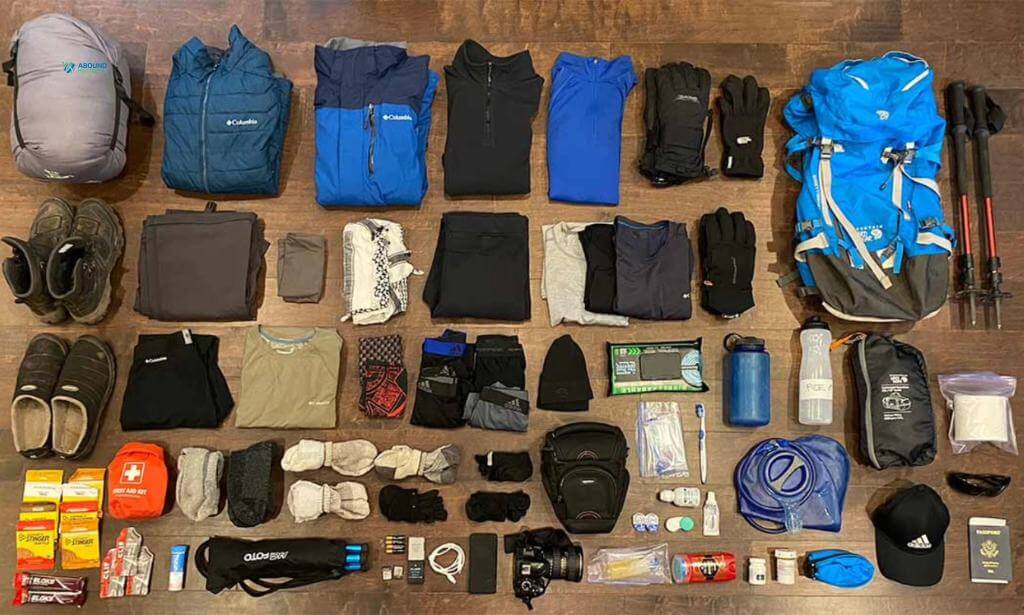
Clothing: Layering for Variable Conditions
Langtang’s weather can change fast - it might be sunny in the afternoon but cold in the morning. That’s why wearing layers is important. You can put on or take off clothes as the temperature changes.
Base Layer
- Thermal top and bottom (synthetic or merino wool)
- Moisture-wicking underwear
Mid Layer
- Fleece jacket or lightweight down jacket
- Insulated vest for extra warmth
Outer Layer
- Waterproof jacket with a hood to cover the head
- Windproof pants or shell trousers for colder days
Additional Clothing
- 2 - 3 pairs of trekking pants, one being convertible
- 3 - 4 quick-dry shirts/t-shirts
- 1 pair of warm trousers for evenings
- 6 - 7 pairs of moisture-wicking socks
- Lightweight sleepwear
Accessories
- A woollen hat or beanie for warmth
- Sun hat or cap
- Lightweight gloves (plus insulated gloves for winter)
- Neck gaiter or buff
Footwear
Having comfy feet is super important on the trail. Bad shoes can make your trek really hard, so get good-quality shoes and socks. Before your long Himalayan trek, wear your trekking boots on short hikes to make sure they fit well and feel okay.
- Trekking Boots: Sturdy, waterproof, and broken in before the trek. Ankle support is crucial for rocky terrain.
- Camp Shoes or Sandals: Light slip-ons for use at teahouses or rest stops.
- Socks: 2 pairs of thermal socks (for higher altitudes) and 3 - 4 pairs of regular trekking socks.
- Gaiters: Useful in snow or mud to keep your boots dry and clean.
Sleeping Gear
Most teahouses in Langtang Valley provide basic bedding, but temperatures can drop below freezing, especially at night. You can rent high-quality sleeping bags in Kathmandu or Syabrubesi, but check cleanliness and temperature ratings.
- 4-Season Sleeping Bag: Rated for –10°C to –15°C. Down or synthetic, depending on preference.
- Sleeping Bag Liner: Adds extra warmth and hygiene.
- Sleeping Pad (Optional): Some trekkers carry a thin foam pad for extra comfort.
Trekking Essentials
These are items that make your trek smoother and safer every day.
- Trekking poles with rubber tips
- Headlamp with extra batteries
- 2 - 3L water bottles or hydration bladder
- Water purification tablets or a filter
- Sunglasses with UV protection
- Sunscreen and lip balm (SPF 30+)
- Personal first aid kit (bandages, blister plasters, painkillers)
- Personal medications
- Small multi-tool or knife
- Trekking map or offline navigation app like Maps.me or AllTrails
Toiletries & Personal Items
Keeping clean and comfortable on the trail is easier with a few essentials packed properly.
- Toothbrush, toothpaste, and dental floss
- Biodegradable soap and shampoo
- Hand sanitizer and wet wipes
- Quick-dry towel
- Toilet paper (carry a small roll per week)
- Feminine hygiene products (as needed)
- Sunscreen, moisturizer, and lip balm
- Small mirror and nail clipper
Snacks & Hydration
Trekking burns a lot of energy, so carrying some snacks can help you refuel between meals.
- Energy bars and protein bars
- Trail mix with nuts and dried fruit
- Electrolyte tablets or sports drink powder
- Rehydration salts (for hot days)
- Lightweight reusable snack containers
Electronics & Miscellaneous
A few gadgets and extras can make your journey easier and capture memories. Do note that even if electricity is available in most lodges, charging might cost extra, so carry a high-capacity power bank.
- Camera with spare batteries and memory cards
- Power bank (10,000 - 20,000 mAh recommended)
- Universal travel adapter
- Phone and charging cable
- Notebook and pen
- Ziplock bags for storing waste or electronics
- Small sewing kit for repairs
Can I Rent or Buy Gear in Nepal?
Yes, you can easily rent or buy trekking gear in Kathmandu before heading to Langtang. Shops in Thamel offer everything from sleeping bags to trekking poles. If you’re short on time, some rental shops also provide gear delivery to your hotel.
Recommended items to rent:
- Sleeping bag
- Down jacket
- Trekking poles
Recommended items to buy new:
- Boots (must fit properly)
- Base layers and socks
- Water bottles and purification gear
Renting gear can make your backpack lighter and save money, especially if you’re only trekking once. Abound Holidays can tell you about trustworthy gear shops in Kathmandu that have good stuff at fair prices.
Packing Tips & Final Recommendations
Packing right isn’t just about having more gear - it is about choosing wisely so that you don't have to trek in discomfort. Here are some final suggestions before you set off:
- Pack light: Try to keep your bag around 10 - 12 kg so porters can carry it easily.
- Organize smartly: Put the heavier things in the middle of your bag to keep it balanced.
- Waterproof liners: Keep your clothes and electronics safe from rain or spills by using liners.
- Adjust by season: Bring extra warm clothes in winter and more rain gear during the monsoon and carry a 4 seasonal sleeping bag.
- Break in your gear: Wear your boots and test your backpack before the trek.
- Stay updated: Check the weather and trail conditions before leaving Kathmandu.
Final Thoughts
Packing for the Langtang Valley Trek doesn’t have to be hard. Just think about layers, comfy shoes, and only the things you really need. A well-packed bag makes your trek easier and more fun. And if you forget something, you can rent or buy most stuff in Kathmandu.
This Langtang Valley Trek Packing List gives you everything you need to stay comfortable across changing weather and terrain. Pack wisely, stay prepared, and enjoy every step of the journey through one of Nepal’s most beautiful valleys.
Customize your trip to the Langtang Valley with Abound Holidays with our Langtang Valley Trek Package. Contact us today!
Frequently Asked Questions
1. What is the best time of year to trek in Langtang Valley?
The best months for Langtang Valley Trek are March to May and September to November. These seasons offer clear skies, stable weather, and comfortable temperatures.
2. Can I trek solo in Langtang Valley?
As of April 1, 2023, solo trekking has been banned by the Nepal Tourism Board (NTB) for safety reasons. Now you are required to hire a guide from an agency registered with the NTB. Hiring a guide adds safety, helps with navigation, and gives cultural insights along the way.
3. Are there ATMs along the Langtang Valley trek?
No, the ATM are not available on the higher altitude of Langtang Valley. So make sure to withdraw enough cash in Kathmandu before leaving as Teahouses only accept cash payments.
4. How much cash should I carry for the trek?
Most trekkers can safely spend NPR 3,000 - 4,000 per day on food, accommodation, and small purchases. So carry around that range plus a bit more in case of emergency.
5. Is Wi-Fi available in Langtang Valley?
Some teahouses in Syabrubesi and Kyanjin Gompa offer paid Wi-Fi, but the connection is often slow. Carry a local SIM for better access.
6. What is the altitude of Langtang Valley and Tsergo Ri?
Kyanjin Gompa lies at about 3,870 m, while Tsergo Ri reaches 4,984 m. Acclimatization days are recommended.
7. Are there any health precautions I should take before the trek?
Consult your doctor before traveling. Carry medicines for altitude, motion sickness, and stomach issues. Stay hydrated and ascend slowly.
8. What is the typical daily itinerary for the Langtang Valley trek?
Most Langtang Valley Trek itineraries run 7–10 days, starting from Syabrubesi and ending at Kyanjin Gompa or Tsergo Ri, then returning by the same trail.
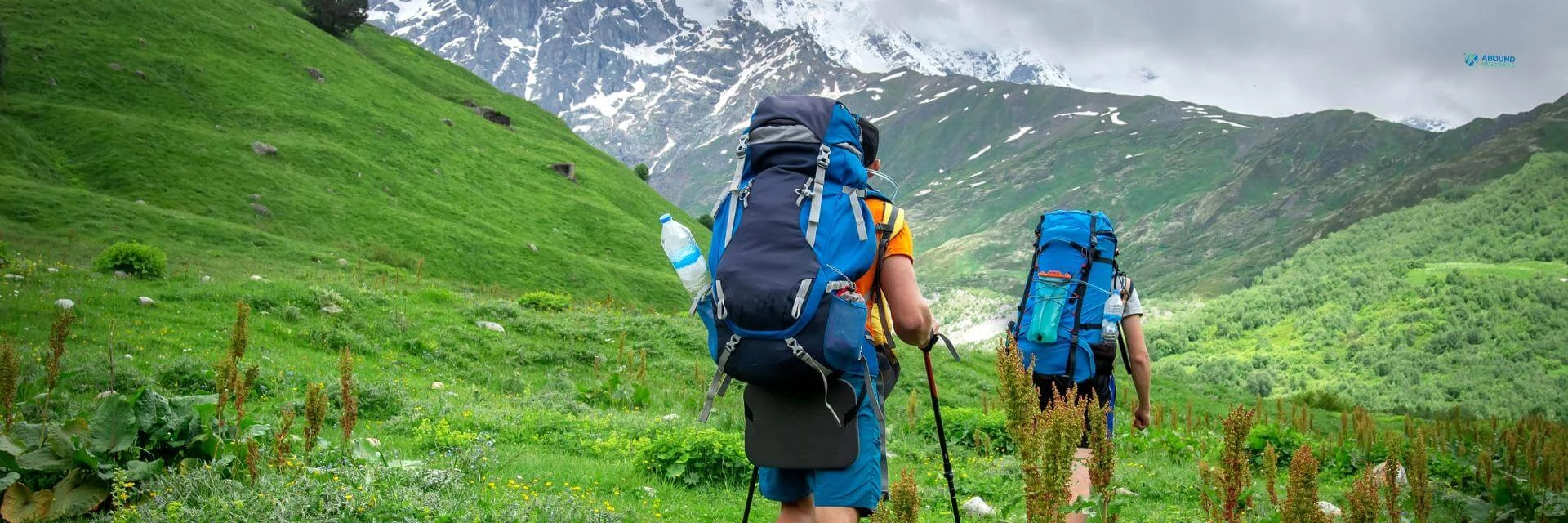
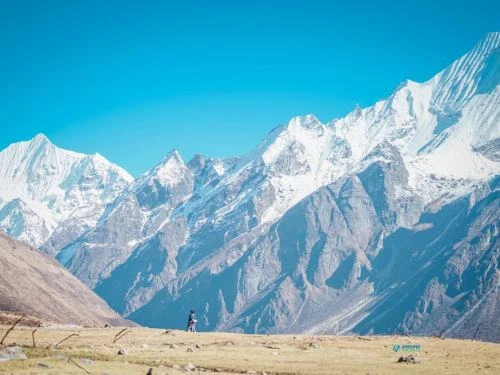
 based on 4 reviews
based on 4 reviews